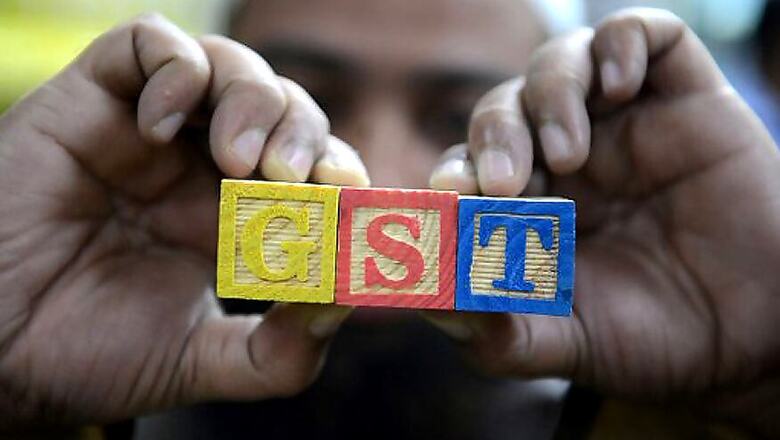
views
In the biggest tax reform since Independence, the Goods and Services Tax (GST) Bill was on Wednesday passed by the Rajya Sabha to replace a raft of different state and local taxes with a single unified value added tax system to turn the country into world's biggest single market.
The 66-year-old Constitution, which gives power to Centre to levy taxes like excise, and empowers states to collect retail sales taxes, was amended though the 122nd Constitution Amendment Bill.
Dubbing passage of the GST Constitution Amendment Bill as historic, Finance Minister Arun Jaitley said manufacturing taxes and VAT will come down with the new national sales tax but the same for services tax will be decided by states and centre.
The GST, which will subsume over a dozen central and state levies including excise duty, service tax and VAT, is "perhaps the most important" tax reform, he said soon after Rajya Sabha overwhelmingly voted for the legislation.What is GST?
The Goods and Services Tax will replace a confusing jumble of central and state levies to create a common market across India for the first time.
At present, anything from film tickets to a car is subject to a multitude of taxes that vary from state to state and sometimes double up. This is one of the reasons why doing business in India is complicated.
The GST proposes to replace existing levies -- such as the luxury tax, VAT, excise duty, central sales tax, entertainment tax and lottery taxes -- with a single tax.What will it mean for India?
Experts say GST could enhance annual GDP growth by one to two percentage points - a huge uplift.
The inefficiency of the current system leads lots of tax collection to fall through the cracks, while a fragmented market encourages local protectionism.
The business lobby is extremely keen on GST, as the current situation makes it difficult for companies to grow and take advantage of economies of scale.
A system of tax credits will encourage more businesses to file returns -- bringing many transactions in the so-called shadow economy into the mainstream and widening the tax base.Why has it taken more than a decade?
Opposing parties have wrangled over the details of GST since it was first announced in 2006.
The Bharatiya Janata Party (BJP) attempted to force the bill through since taking power from a Congress-led government in 2014, but in recent weeks a more conciliatory tone has forged broad agreement between the two sides.
Concessions by the BJP include removing a proposed additional one percent tax on inter-state transactions and compensating states for any lost revenue for five years.
Alcohol and fuel have also been left out of GST for the time being.What happens next?
Once the bill has been passed by both houses of Parliament, at least 15 of India's 29 states have to ratify the document for it to go forward.
Then a further bill, likely to be introduced in the winter session of Parliament, is required to enshrine the tax in law.
Several key details, including the standard rate of GST, have still to be worked out.
A GST Council will be set up, with ministers from both of central and local government to implement the tax.When will it take effect?
The government is targeting April 2017 for GST to be in place.
However, there is a lot of work to be done before then.
GST is designed to be electronic with no manual filing of returns -- necessitating a vast IT infrastructure.
"April 2017 seems a highly optimistic timeline to have it in place," said Krishan Arora, a Director at Grant Thornton India, who called implementing GST a "herculean task".
















Comments
0 comment